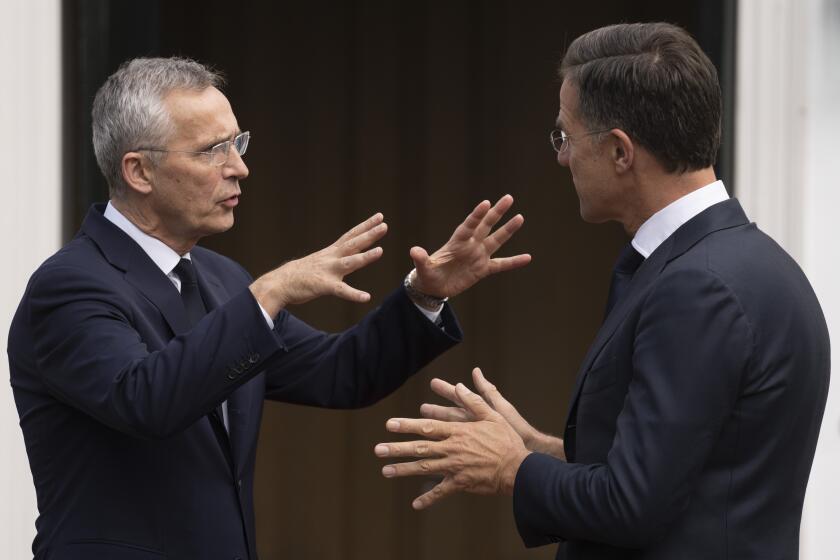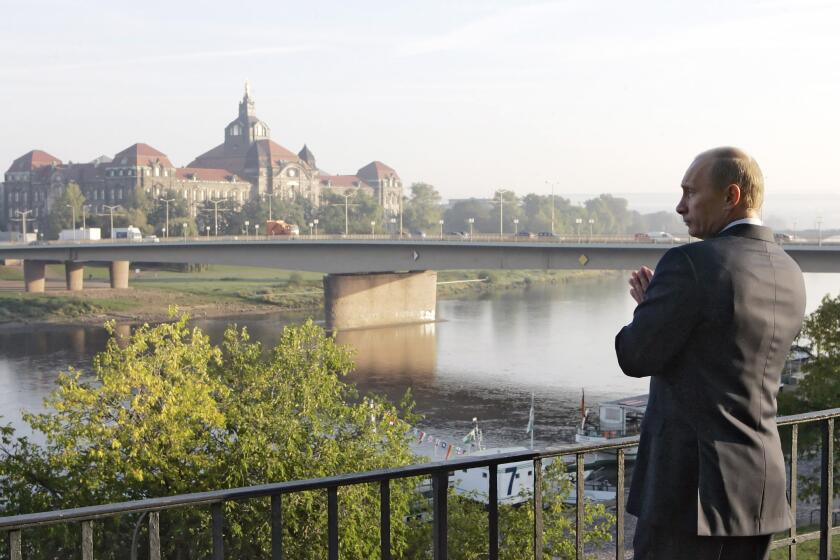Russia launches Baltic naval drills, ratcheting up tensions with European neighbors
- Share via
Russia’s Ministry of Defense said it began live-fire naval exercises in the Baltic Sea on Wednesday, ratcheting up tensions with nearby European nations that are already high over NATO and Ukraine.
Russia last carried out mass military exercises in the Baltic Sea in June, two months after Finland became NATO’s newest member. The drills took place at the same time NATO was holding its own Baltic Sea exercises.
The Russian exercises announced Wednesday will involve more personnel and aircraft than the last round and will feature the use of live weapons.
NATO chief says Russia’s military shouldn’t be underestimated and the alliance has increased its readiness to confront Russia in recent days
The Russian defense ministry said the navy’s commander in chief, Adm. Nikolai Evmenov, will oversee the drills, which were designed to test “the navy’s readiness to protect the national interests of the Russian Federation in an operationally important area.”
The Ocean Shield-2023 exercises will involve forces practicing how to “protect sea lanes, transport troops and military cargo, as well as defend the coastline,” the ministry said. More than 200 combat exercises will involve some 6,000 personnel, 30 warships and boats and 30 aircraft, it added.
Russian President Vladimir Putin’s KGB years in East Germany offer a window into his crackdown on protests, war on Ukraine and yearning for empire.
Russian President Vladimir Putin has long railed against NATO and has tried to limit the Western military alliance’s expansion, especially to countries which used to be part of the Soviet Union. The Baltic nations of Latvia, Lithuania and Estonia joined NATO in 2004.
After Russia’s invasion of Ukraine, Finland and Sweden both applied to join NATO. Finland, which has a Baltic coast, became the 31st member in April, more than doubling Russia’s land border with NATO.
More to Read
Sign up for Essential California
The most important California stories and recommendations in your inbox every morning.
You may occasionally receive promotional content from the Los Angeles Times.












